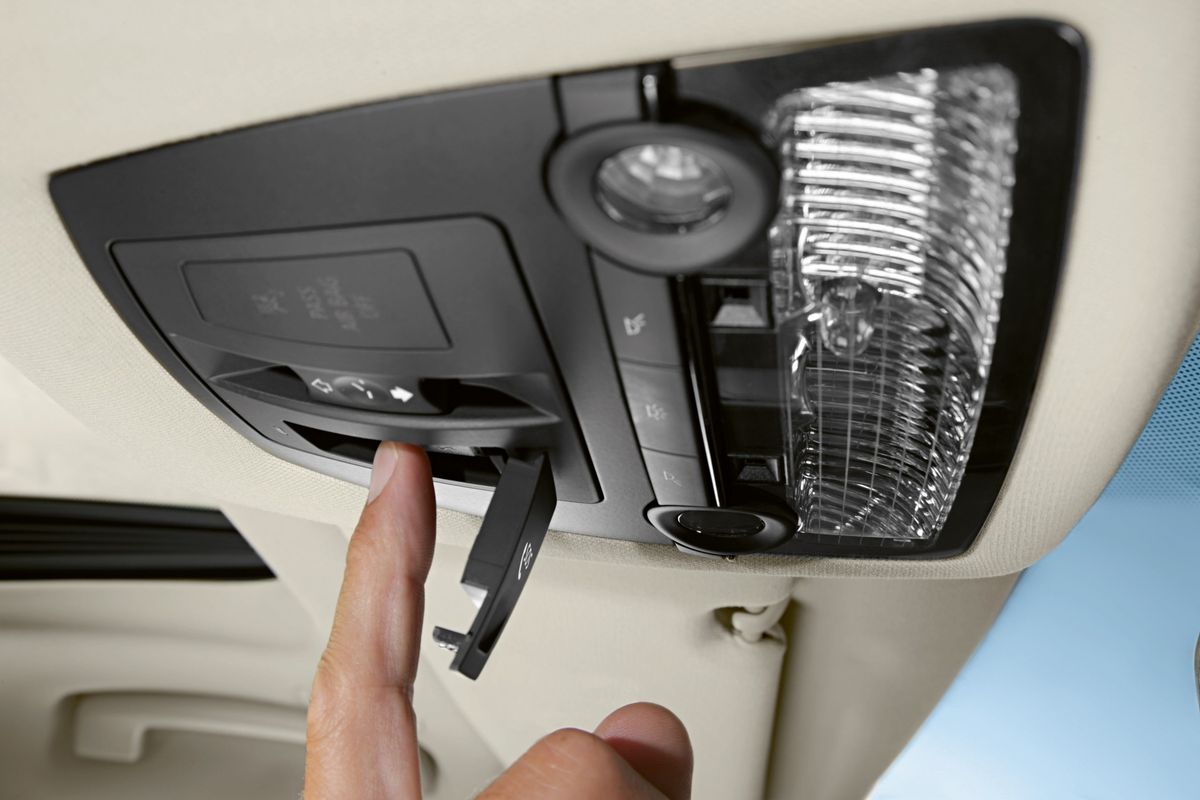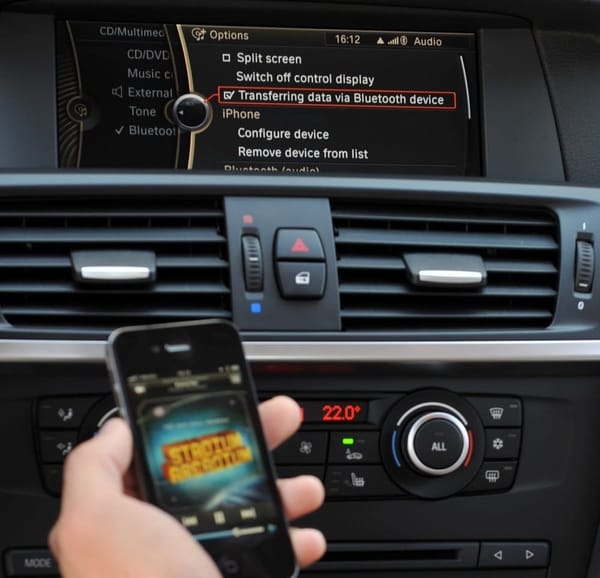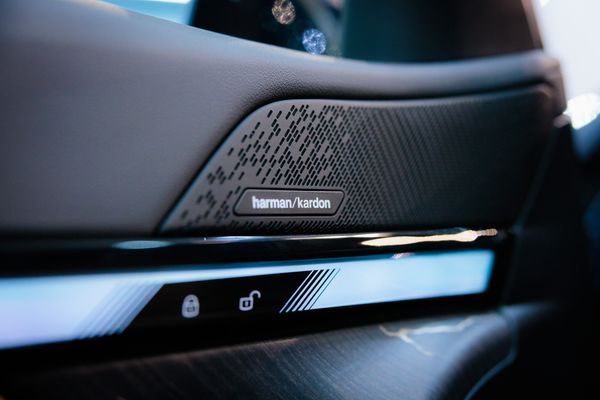BMW SOS System Malfunction: From Diagnostics to Solutions

Alright, gearheads, let's dive deep into the fascinating world of BMW's SOS Emergency Call system.
You've seen it, right?
That little button begging you to press it when you least expect to need it. But here's the thing – when it throws a tantrum and flashes that "Emergency Call" malfunction message, it's not just your car having a minor mood swing.
Oh no, it's a bit more serious than that.
In the pages that follow, we won't just skim the surface. No, we're going full throttle into the heart of this system.
We'll dissect its quirks, understand its mood swings, and by the end, you'll be equipped to tackle any SOS system blues your Bimmer might throw your way.
Key Facts
Pop quiz time! What's the most common culprit behind the SOS malfunction message?
If you guessed an aged or faulty telematics unit's battery, give yourself a pat on the back.
But, as we're about to find out, the plot thickens.
Here's a snapshot of what's going on under the hood:
- Telematics Tantrums: The most frequent offender is indeed an aged or tired telematics backup battery. Think of it as your car's way of saying, "Hey, I'm feeling a little drained here!"
- Warning Signs: When the system senses something amiss, it's not shy about it. It'll promptly display a warning message and log it in the control unit. It's like your car's personal diary of issues it wants you to address.
- Diagnostic Tools: To truly understand your car's SOS system woes, you'll need a scanner. It's like a translator, decoding the complex language of error memories. And remember, post any repair (like a battery swap), it's essential to erase those error entries to get back on track.
- External Factors: Here's a fun fact: issues like cellular network glitches won't trigger the SOS malfunction. It's like blaming a bad phone call on your handset when the network's down. Wrong culprit!
- Tech Updates: In the tech-driven age, even cars aren't immune. Older systems that run on 2G and 3G technology are like vintage rotary phones in a world of smartphones. In many regions, like the US, they're simply obsolete.
Alright, with those key facts in hand, let's peel back the layers of this sophisticated system and get to the heart of the matter. Onward!
Understanding the Emergency Call System
Ever wondered how your BMW just knows when something's wrong with the SOS system? It's like having a sixth sense, but for cars. Let's pull back the curtain on this magical act.
The Web of Connectivity: The Emergency Call system isn't a lone ranger. It's an intricate ballet of diverse components, all dancing in perfect synchronization. But it's not just about the car. The performance also relies on a host of external actors, from satellite connections to data centers.
Beyond the Car: It's easy to think that the SOS system is all about the tech inside your BMW. But here's the twist: it needs a whole range of external infrastructure to function smoothly. Imagine trying to make a call with no cell towers around. The SOS system faces a similar challenge.
A Brief History: Over the past quarter-century, BMW's telematics have evolved. Picture it as moving from a pager to the latest smartphone. Each generation brought new features, improved reliability, and yes, its own set of quirks.
The Importance of Context: Before you dive headfirst into a diagnostic frenzy, pump the brakes. It's crucial to grasp the bigger picture. Understanding the broader context, from the telematics' evolutionary journey to the common problem areas, is your secret weapon. It's like having a roadmap in a maze.
So, the next time your BMW throws an SOS malfunction curveball your way, remember: it's not about the glitch, but understanding the why behind it. Let's rev up our engines and journey further into the intricacies of the system.
How the Emergency Call (SOS) System Works
Alright, petrolheads, let's put the rubber to the road and break down this beast. Sure, the SOS button looks all fancy and shiny up there next to your sunroof switch, but there's a whole world of tech and innovation behind that little button.
From Luxury to Lifesaver
Back in 1997, BMW decided to introduce a bit of James Bond tech to their cars. Dubbed the "mayday function," it made its debut in models like the E38, E39, and E46. While it started as a cool luxury, it quickly became a lifesaver. Crash your car, and it'll automatically ring up for help. Or, if you fancy doing things manually, give that SOS button a press.
The Behind-the-Scenes Magic
When you're in a jam, time is of the essence. With the Emergency Call system, as soon as trouble strikes, the BMW telematics spring into action. They send out a distress call, complete with your exact GPS coordinates and even the vehicle's details. It's like having your personal emergency dispatcher.
Talk to Me, BMW
Along with the data blitz, your car will also establish a direct line to the BMW Call Center. Imagine getting into a fender bender and having a trained operator instantly on the line, ready to assist. They've got your back!

Crash Analytics
The system isn't just about calling for help. Post-2007, BMW upped the ante with an enhanced Automatic Crash Notification Technology (ACNT). This tech-savvy system uses onboard sensors to analyze the crash's severity. So, when rescue teams are dispatched, they know exactly what they're walking into.
The Communication Highway
The data flow doesn't stop at the call center. Key details are relayed to the nearest 911 Public Safety Answering Point. Whether it's dispatching helicopters or alerting emergency medical teams, the right resources are mobilized based on the situation.
The Evolutionary Road
As with all tech, the Emergency Call system has seen its fair share of updates and evolutions. But as we've learned, with new features come new challenges, from outdated tech to connectivity issues.

Alright, we've turbocharged our way through the mechanics of the SOS system. Now, let's navigate the twisty roads of its quirks and fixes.
Evolution of BMW Telematics
Buckle up, because we're about to take a high-speed journey through time, tracing the evolution of BMW's telematics. It's a story filled with innovation, occasional bumps, and a relentless drive to enhance the driving experience.
The Dawn of Telematics (TCU 1997-2010)
Picture a world where cell phones were brick-sized and the internet sounded like a dial-up tone. Into this era, BMW introduced the Telematics Control Unit (TCU). While it was revolutionary for its time, the early versions, especially in classics like the E46 3 Series or E39 5 Series, now seem like relics. With the phasing out of the 2G cellular network around 2016-2017, these systems were left in the technological rear-view mirror. The common fix? Code them out and move on.
Enter the Combox (CBX-ECALL)
By 03/2010, BMW decided the TCU needed a retirement party. Enter the Combox, which was split into CBX-MEDIA and CBX-ECALL. But here's the kicker: it operated on the soon-to-be-obsolete 2G technology. BMW tried to patch things up with some options, including a 3G upgrade, but it was clear that the Combox was just a transitional solution.
The Modern Era (TCB And ATM Telematics)
Introduced in 2013, the Telematics Communication Box (TCB) was a game-changer. The system was not only more advanced, but it also came with its own backup battery. This meant that even if the main power source was compromised, the TCB could still function for a few crucial minutes. However, as with all things tech, it wasn't without its issues. The most common hiccup? A dying backup battery, often leading to those dreaded SOS Malfunction messages.
The Future
Telematics are not static; they continually evolve. As we move into an era of connected cars, autonomous driving, and advanced driver assistance systems, BMW's telematics will undoubtedly play a central role. It's not just about calling for help anymore; it's about creating a holistic, connected driving experience.
Alright, we've cruised through the past and present of BMW telematics. Next up, we'll gear down and delve into the nitty-gritty of diagnostics and repair. Hang tight;
Diagnostics and Repair Guide
So, your trusty BMW's flashing that SOS malfunction message, and you're thinking, "Now what?" Fear not, because we're about to jump into the diagnostic driver's seat and troubleshoot like a pro.
Start with the Basics
- Before you even think of popping the hood, take a moment. Ask yourself: Is my BMW's telematics system compatible with the network tech in my region? For our American pals, you're looking at 4G compatibility from 2017 onwards. In the EU, 3G might still have you covered. It's like ensuring you have the right fuel for your car – essential!
Locating the Telematics Modules:
- Depending on your BMW's age and model, the telematics modules could be chilling in different spots. Some hang out on the trunk floor, while others prefer the view from under the shark fin on the roof. Locating them is your first step.
The Backup Battery Swap:
- If you've zeroed in on a battery issue (especially with the TCB telematics), you're in for some hands-on action. While some models make it a breeze, others might require a bit more finesse (and patience). But hey, consider it quality time with your beloved Bimmer.
- Pro-tip: For roof-mounted batteries, lowering the rear part of the headliner can save you a ton of time. But remember, it's a delicate operation. So, tread carefully!
Common Issues & Quick Fixes:
- Backup Battery Blues: A tired backup battery is often the main villain behind those SOS malfunction messages. Depending on the unit (TCB vs. ATM), the location and battery type can vary. But with a bit of patience, swapping it out is doable.
- Water Woes: If your telematics control unit has taken a bit of a swim due to a leaky shark fin seal, it's time for some damage control. Check for corrosion, ensure the seal is intact, and consider resealing if necessary.
- Speaker & Microphone Mischief: Got a speaker or mic issue? It's usually a simple fix. Often, it's just a disconnected component, especially if you've recently had work done around the headliner or footwell panel.
- Software Snafus: Ah, software – it giveth, and it taketh away. If you suspect a software glitch, especially with roof-mounted TCB2 and ATM units, consider a flash update. While it's not a guaranteed fix, it's worth a shot before resorting to more drastic measures.
Remember the Reset:
- After any repair or battery swap, it's crucial to clear the fault memory. Think of it as giving your BMW a fresh start, free from any past hiccups.
Alright, fellow BMW enthusiasts, with this diagnostic guide in your toolkit, you're armed and ready to tackle any SOS system snags head-on.
As we rev up for the next section, we'll deep-dive into the most common issues and their fixes. Let's keep the momentum going!
Spotlight on Common SOS System Issues
Even the mightiest of machines have their Achilles' heel, and our beloved BMWs are no exception. Let's shine a light on the usual suspects that might give your SOS system some grief.
The Backup Battery Dilemma
This one tops the charts. It's like that one recurring hiccup that just won't go away. Backup batteries, whether in the TCB or ATM units, have a lifespan.
And when their time's up, they'll make sure you know.

- Spotting the Signs: An aged or fatigued battery will often send out SOS malfunction messages. The system self-tests at every start-up, and if the battery isn't up to par, you'll get the memo.
- The Fix: Swap out the battery, and you're good to go. Remember, while some models make it a cinch, others might require a bit more elbow grease. But with the right tools and a bit of patience, it's a manageable DIY task.
The Water Leak Worry
Water and electronics? Not the best mix. If water's found its way into the telematics control unit, thanks to a faulty shark fin seal, you're in for some repair time.

- Spotting the Signs: Look out for signs of corrosion or any diagnostic trouble codes pointing towards an internal ECU error.
- The Fix: Ensure the seal is in top shape, consider resealing if necessary, and always keep an eye out during those car wash sessions.
Speaker & Microphone Mysteries
- These two components might seem minor, but they play a crucial role. And when they act up, it's time to play detective.
- Spotting the Signs: If you've had recent work done around the headliner or footwell panel, a disconnected component might be the culprit. Diagnostic error codes can also guide you to the problem.
- The Fix: Reconnect any loose components and check for water damage, especially if your BMW comes with a sunroof.
Software Slip-Ups
In an age of tech-driven cars, software issues are par for the course. And with the SOS system, they can manifest in various ways.

- Spotting the Signs: If you're diving deep with tools like E-Sys or ISTA, keep an eye out for missing or corrupted software files. Zeroes in place of software file names? Red flag!

- The Fix: While a software flash or update might do the trick, sometimes you might be looking at a more comprehensive overhaul or even a module replacement.
As we cruise through this section, remember, while these issues might seem daunting, with the right knowledge and a bit of persistence, there's no SOS system snag that's insurmountable.
As we gear up for the next leg of our journey, we'll delve deeper into other software-related challenges and their solutions.
Legacy System Challenges
Remember the switch from 2G and 3G tech? While it was a leap forward for cellphones, for older BMW telematic systems, it spelled obsolescence.
- Spotting the Signs: If you're rocking a vintage Bimmer with telematics-based on 2G or 3G, and you're facing connectivity issues, the tech sunset might be the culprit.
- The Fix: While some solutions involve deactivating the system or upgrading the hardware, it's essential to weigh the costs and benefits. Sometimes, it might be more feasible to upgrade to a newer model with current tech.
Reset, Reboot, Resolve:
- Post any software update or tweak, always remember to reboot and reset the system. It ensures that all changes are seamlessly integrated, and you're not left with lingering issues.
In the world of BMW telematics, understanding software-related challenges is half the battle won.
With the right diagnostic tools, a bit of patience, and a dash of tech-savviness, you'll be cruising smoothly in no time.
As we shift gears to the next section, we'll explore more intricate details of the SOS system, ensuring you're always in the driver's seat, no matter the challenge.





